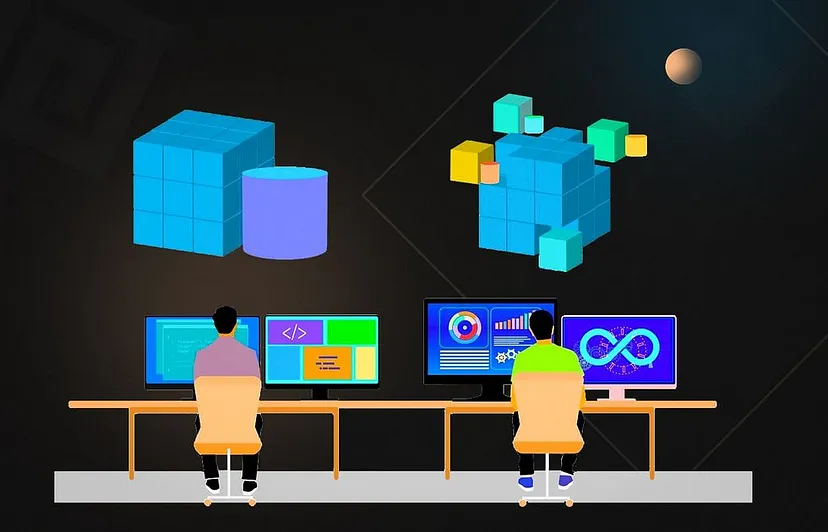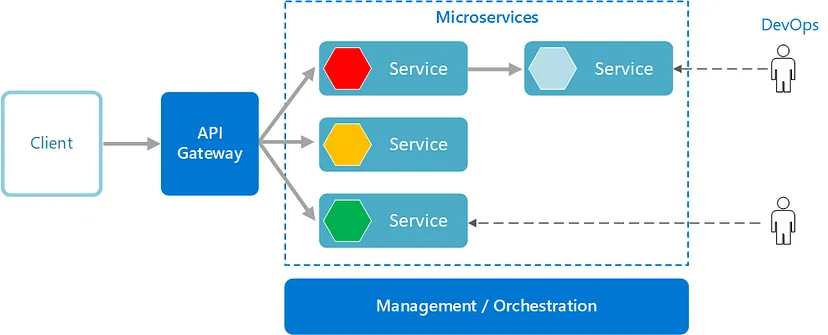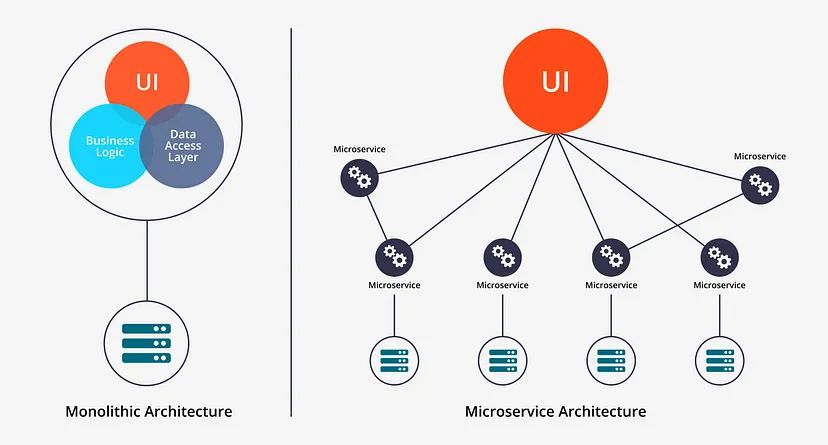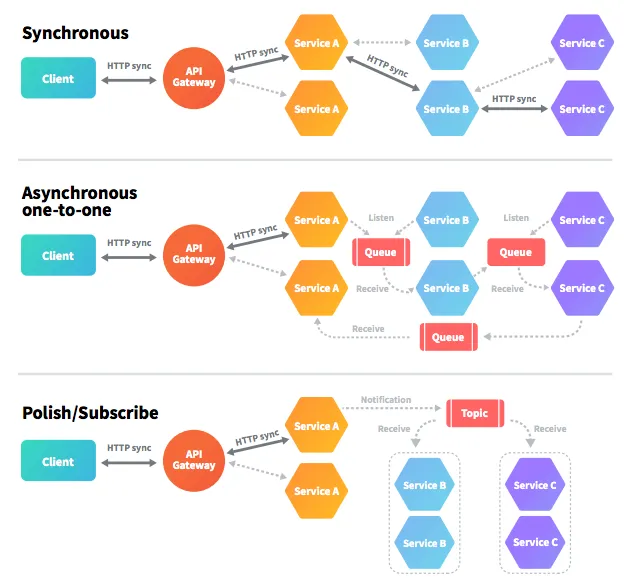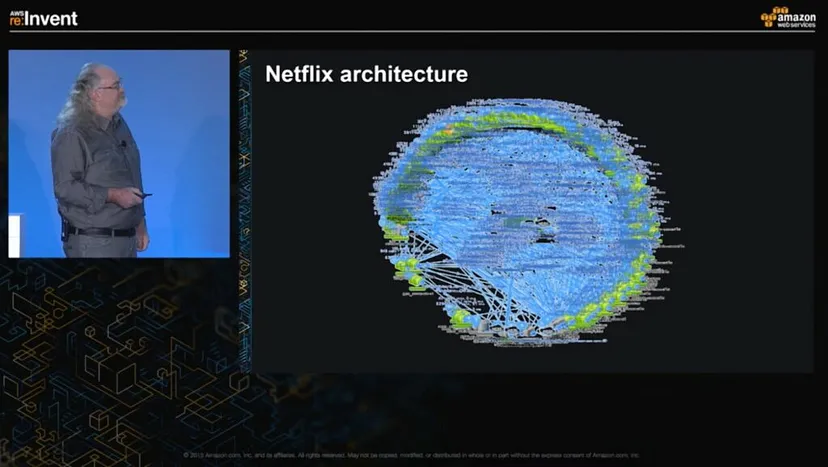
Meera Devi G N
All you need to know about MicroServices
Welcome to my blog, where I invite you to join me on a journey of discovery, inspiration and thoughtful discussions.
Here are what you’ll find in this article.
- What is Microservices ?
- Migrating from Monolith to Microservices
- The Art of Collaboration: Interactions Among Microservices
- Advantages of Microservices
- Challenges on the Microservices Journey
- Best Practices for Successful Microservices Adoption
- Real-world Examples: Microservices in Action
- Why Microservices are the future
- Conclusion
Lets dive into the magical world of microservices…
What is Microservices ?
Microservices is an architectural and organizational approach to software development where software is composed of small independent services that communicate over well-defined APIs.It is an architectural design for building a distributed application using containers. They get their name because each function of the application operates as an independent service. This architecture allows for each service to scale or update without disrupting other services in the application.
Migrating from monolith to microservice
There are several challenges and limitations of monolithic architecture that include:
- Lack of agility and innovation
- Impossible to scale a part of the system
- Problematic to apply new technology Microservices
- Harder to make updates/changes
- Interdependency of components
Unlike slow and heavy monolith architectures, microservices simplify app management, making it easier for you to build, deploy, update, test and scale each service independently.
There are multiple reasons to consider for migrating to microservices from monolithic, including:
Decentralized: Monolithic systems use a single database for different apps, whereas microservices have a separate database for each service. Microservices has decentralized data management and governance.
Granular scaling: You can auto-scale up or down individual services without scaling the entire app, using microservices. Thus, its simplicity improves the quality of a definite functionality.
Myriad components: You can break down microservices architecture into several component services. Then, you can independently deploy, revamp and redeploy these services.
Simple routing: The functioning of microservices is like that of UNIX systems. They have a much simpler routing process which starts from getting requests, processing them, and lastly, creating a response accordingly.
Failure proof: In a microservices architecture, the failure of a single module will not affect larger apps.
Thanks to its modular approach, its architecture makes it possible to overcome the typical limitations of monolithic development.
The Art of Collaboration: Interactions Among Microservices
Since microservices are complex structure into independently developed and deployed services, we should be careful when considering communication types and manage them into design phases. microservices are distributed and microservices communicate with each other by inter-service communication on network level. Each microservice has its own instance and process. Therefore, services must interact using an inter-service communication protocols like HTTP, gRPC or message brokers AMQP protocol. It can be achieved in both synchronous and asynchronous pattern.
Advantages of Microservices
- Breaks tight coupling that exists in most monolithic architectures.
- Reduce development time and effort.
- Scalable and reusable software architecture.
- Deploy software components individually in isolation.
- Isolated services to improve system security.
- Less time-consuming and costly firmware updates.
- More flexible product customization.
Challenges on the Microservices Journey
Here are some of the top challenges that an organization face in their microservices journey.
- We have multiple services making up the same functionality .When an error arises in the application, finding the root cause can be challenging.
- The loads on the different microservices may be at a different instance of the type. As well as auto-scaling up your microservice should auto-scale down.
- As we add more microservices, we have to be sure they can scale together. More granularity means more moving parts, which increase complexity.
- The traditional logging is ineffective because microservices are stateless, distributed, and independent. The logging must be able to correlate events across several platforms.
- When more services interact with each other, the possibility of failure also increases.
Best Practices for Successful Microservices Adoption
- Adopt the Single Responsibility Principle.
- Build teams with clear responsibilities.
- Use the right tools and frameworks.
- Keep asynchronous communication between microservices.
- Adopt the DevSecOps model and secure microservices.
- Use a separate data store for each microservice.
- Deploy each microservice separately.
- Orchestrating microservices.
- Use an effective monitoring system.
Real-world Examples: Microservices in Action
Some of the most innovative and profitable microservices architecture examples among enterprise companies in the world — like Amazon, Netflix, Uber, and Etsy — attribute their IT initiatives’ enormous success in part to the adoption of microservices.
- Uber, the popular ride-sharing service, leverages microservices to power its extensive global infrastructure. By handling specific functionalities like ride requests, payments, and driver management, Uber ensures high availability, scalability, and real-time tracking for millions of users worldwide.
-
Netflix, the renowned streaming giant, adopted a microservices architecture to build a highly
scalable and resilient platform.
Netflix achieved faster innovation, fault tolerance, and personalized user experiences.
- Amazon, the e-commerce giant, utilizes microservices to power its vast range of services, from product recommendations to order fulfillment.
- Microservices at Twitter enable features like timelines, notifications, and messaging, ensuring high performance, scalability, and responsiveness.
By embracing the microservices approach, these companies have achieved greater scalability, fault tolerance, and agility, enhancing their ability to meet the ever-growing demands of their users.
Why microservices are the future
As we look to the future, microservices will continue to evolve alongside emerging technologies like cloud-native architectures, serverless computing, and AI-driven applications. It is an exciting time to be part of this ever-evolving landscape, where the possibilities for innovation and growth are endless.
Conclusion
Whether you are a developer, architect, or business leader, embracing microservices can unlock new opportunities for your organization. By understanding the core principles, adopting best practices, and learning from real-world examples, you can harness the power of microservices to create transformative applications that meet the demands of the modern digital world.
So, embrace the magic of microservices, embark on your own journey of architectural transformation, and let your imagination soar as you build the next generation of software marvels. The world of microservices awaits, ready to empower you to create scalable, resilient, and innovative applications that shape the future.
Happy learning !
